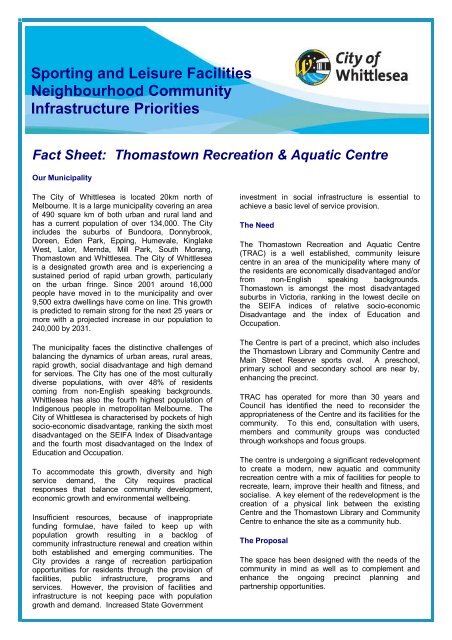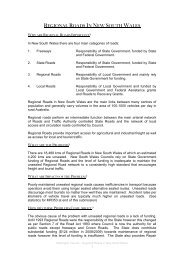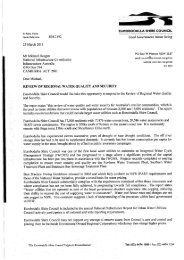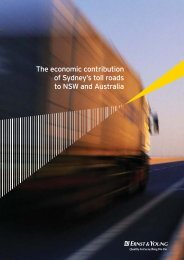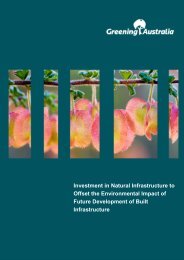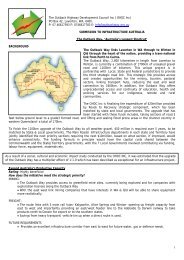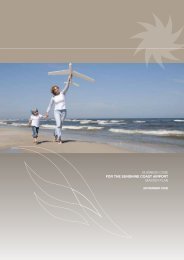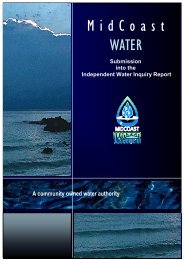Sporting and Leisure Facilities Neighbourhood Community ...
Sporting and Leisure Facilities Neighbourhood Community ...
Sporting and Leisure Facilities Neighbourhood Community ...
You also want an ePaper? Increase the reach of your titles
YUMPU automatically turns print PDFs into web optimized ePapers that Google loves.
<strong>Sporting</strong> <strong>and</strong> <strong>Leisure</strong> <strong>Facilities</strong><strong>Neighbourhood</strong> <strong>Community</strong>Infrastructure PrioritiesFact Sheet: Thomastown Recreation & Aquatic CentreOur MunicipalityThe City of Whittlesea is located 20km north ofMelbourne. It is a large municipality covering an areaof 490 square km of both urban <strong>and</strong> rural l<strong>and</strong> <strong>and</strong>has a current population of over 134,000. The Cityincludes the suburbs of Bundoora, Donnybrook,Doreen, Eden Park, Epping, Humevale, KinglakeWest, Lalor, Mernda, Mill Park, South Morang,Thomastown <strong>and</strong> Whittlesea. The City of Whittleseais a designated growth area <strong>and</strong> is experiencing asustained period of rapid urban growth, particularlyon the urban fringe. Since 2001 around 16,000people have moved in to the municipality <strong>and</strong> over9,500 extra dwellings have come on line. This growthis predicted to remain strong for the next 25 years ormore with a projected increase in our population to240,000 by 2031.The municipality faces the distinctive challenges ofbalancing the dynamics of urban areas, rural areas,rapid growth, social disadvantage <strong>and</strong> high dem<strong>and</strong>for services. The City has one of the most culturallydiverse populations, with over 48% of residentscoming from non-English speaking backgrounds.Whittlesea has also the fourth highest population ofIndigenous people in metropolitan Melbourne. TheCity of Whittlesea is characterised by pockets of highsocio-economic disadvantage, ranking the sixth mostdisadvantaged on the SEIFA Index of Disadvantage<strong>and</strong> the fourth most disadvantaged on the Index ofEducation <strong>and</strong> Occupation.To accommodate this growth, diversity <strong>and</strong> highservice dem<strong>and</strong>, the City requires practicalresponses that balance community development,economic growth <strong>and</strong> environmental wellbeing.Insufficient resources, because of inappropriatefunding formulae, have failed to keep up withpopulation growth resulting in a backlog ofcommunity infrastructure renewal <strong>and</strong> creation withinboth established <strong>and</strong> emerging communities. TheCity provides a range of recreation participationopportunities for residents through the provision offacilities, public infrastructure, programs <strong>and</strong>services. However, the provision of facilities <strong>and</strong>infrastructure is not keeping pace with populationgrowth <strong>and</strong> dem<strong>and</strong>. Increased State Governmentinvestment in social infrastructure is essential toachieve a basic level of service provision.The NeedThe Thomastown Recreation <strong>and</strong> Aquatic Centre(TRAC) is a well established, community leisurecentre in an area of the municipality where many ofthe residents are economically disadvantaged <strong>and</strong>/orfrom non-English speaking backgrounds.Thomastown is amongst the most disadvantagedsuburbs in Victoria, ranking in the lowest decile onthe SEIFA indices of relative socio-economicDisadvantage <strong>and</strong> the index of Education <strong>and</strong>Occupation.The Centre is part of a precinct, which also includesthe Thomastown Library <strong>and</strong> <strong>Community</strong> Centre <strong>and</strong>Main Street Reserve sports oval. A preschool,primary school <strong>and</strong> secondary school are near by,enhancing the precinct.TRAC has operated for more than 30 years <strong>and</strong>Council has identified the need to reconsider theappropriateness of the Centre <strong>and</strong> its facilities for thecommunity. To this end, consultation with users,members <strong>and</strong> community groups was conductedthrough workshops <strong>and</strong> focus groups.The centre is undergoing a significant redevelopmentto create a modern, new aquatic <strong>and</strong> communityrecreation centre with a mix of facilities for people torecreate, learn, improve their health <strong>and</strong> fitness, <strong>and</strong>socialise. A key element of the redevelopment is thecreation of a physical link between the existingCentre <strong>and</strong> the Thomastown Library <strong>and</strong> <strong>Community</strong>Centre to enhance the site as a community hub.The ProposalThe space has been designed with the needs of thecommunity in mind as well as to complement <strong>and</strong>enhance the ongoing precinct planning <strong>and</strong>partnership opportunities.
The TRAC Outdoor Activities Area will be a versatile,multi-generational activities area that will cater for abroad range of community users.A beach experience is the overriding theme of theoutdoor space which provides spaces for all ages<strong>and</strong> abilities to interact <strong>and</strong> experience sporting,water play, socialising, relaxing, <strong>and</strong> communityevent opportunities.A key focus of the outdoor space is a large openbeach which can provide outdoor sport <strong>and</strong> fitnesstraining, play <strong>and</strong> social opportunities as well as softfall for a mix of play equipment.A deck will be a colourful all abilities path attractingpatrons into the outdoor space <strong>and</strong> creating aboundary for the s<strong>and</strong> area <strong>and</strong> an clear journey tothe various social areas throughout the outdoorspace.Water terraces will provide a unique waterexperience that complements (rather than replicates)what is being provided indoors.The play spaces include: a toddlers’ area with a mixof climbing, interactive <strong>and</strong> wet s<strong>and</strong> opportunities; alarger more challenging climbing rope for olderchildren <strong>and</strong> sensory garden areas for further play<strong>and</strong> interaction.A media screen offers an exciting element that isevolutionary <strong>and</strong> can be adapted to meet the interest<strong>and</strong> needs of today’s youth as well as futuregenerations.The screen structure also incorporates a boulderingwall which can be used by everyone for both play<strong>and</strong> fitness.Open space <strong>and</strong> hard court areas allow for informalactive <strong>and</strong> passive recreational <strong>and</strong> sportingopportunities.Elements such as seating, BBQs, <strong>and</strong> shade havebeen strategically placed throughout the space tocreate a number of social hubs <strong>and</strong> to provide sunprotection options.CostThe development of the outdoor activities area isexpected to cost approximately $1.06M.The City of Whittlesea has received a $2.5M grantfrom the State Government’s <strong>Community</strong> FacilityFunding Program 2008/2009 (Aquatic Access/BetterPools) for the full redevelopment of the centreincorporating the outdoor space.Council will also be seeking financial assistance forthe project from the Department of Planning <strong>and</strong><strong>Community</strong> Development’s <strong>Community</strong> SupportFund.State Government Policy AlignmentA Fairer Victoria:Strategy 5: Providing fairer access to services“The Victorian Government will invest $6.1m topromote fairer access to services <strong>and</strong> reduce barriersto accessing services”Strategy 12: Building stronger communitiesAction 12.8 Support new community projects“Continue to provide support for community projectsthrough the <strong>Community</strong> Support Fund.”“The <strong>Community</strong> Facility Funding Programcontributes to the provision of high quality <strong>and</strong>accessible community sport <strong>and</strong> recreation facilitiesacross Victoria.”A Fairer Victoria: Strong People, StrongCommunitiesPriority Area Three: Improving Health <strong>and</strong>Wellbeing – Reducing health inequalities <strong>and</strong>promoting wellbeing‘Much more can be achieved through targetedinvestments to reduce the unfair burden of diseaseon disadvantaged Victorians. Tackling the causes ofpreventable disease by encouraging physical activity….<strong>and</strong> the wellbeing <strong>and</strong> life options of people with adisability are among the important challenges.’2
<strong>Sporting</strong> <strong>and</strong> <strong>Leisure</strong> <strong>Facilities</strong><strong>Neighbourhood</strong> <strong>Community</strong>Infrastructure PrioritiesFact Sheet: City of Whittlesea Access for All Abilities(AAA) Playground DevelopmentOur MunicipalityThe City of Whittlesea is located 20km north ofMelbourne. It is a large municipality covering an areaof 490 square km of both urban <strong>and</strong> rural l<strong>and</strong> <strong>and</strong>has a current population of over 134,000. The Cityincludes the suburbs of Bundoora, Donnybrook,Doreen, Eden Park, Epping, Humevale, KinglakeWest, Lalor, Mernda, Mill Park, South Morang,Thomastown <strong>and</strong> Whittlesea. The City of Whittleseais a designated growth area <strong>and</strong> is experiencing asustained period of rapid urban growth, particularlyon the urban fringe. Since 2001 around 16,000people have moved in to the municipality <strong>and</strong> over9,500 extra dwellings have come on line. This growthis predicted to remain strong for the next 25 years ormore with a projected increase in our population to240,000 by 2031.The municipality faces the distinctive challenges ofbalancing the dynamics of urban areas, rural areas,rapid growth, social disadvantage <strong>and</strong> high dem<strong>and</strong>for services. The City has one of the most culturallydiverse populations, with over 48% of residentscoming from non-English speaking backgrounds.Whittlesea has also the fourth highest population ofIndigenous people in metropolitan Melbourne. TheCity of Whittlesea is characterised by pockets of highsocio-economic disadvantage, ranking the sixth mostdisadvantaged on the SEIFA Index of Disadvantage<strong>and</strong> the fourth most disadvantaged on the Index ofEducation <strong>and</strong> Occupation.To accommodate this growth, diversity <strong>and</strong> highservice dem<strong>and</strong>, the City requires practicalresponses that balance community development,economic growth <strong>and</strong> environmental wellbeing.infrastructure is not keeping pace with populationgrowth <strong>and</strong> dem<strong>and</strong>.Increased State Government investment in socialinfrastructure is essential to achieve a basic level ofservice provision.The NeedA key recommendation of Council All Abilities PlaySpace Strategy is to provide one municipal AAA playspace in the Mill Park/South Morang/Bundoora area.The City of Whittlesea does not currently have anyplay equipment specifically designed to be accessiblefor people with disabilities. Action 1.8.1 of theDisability Action Plan adopted by Council inDecember 2003 strongly supports the provision ofaccessible <strong>and</strong> inclusive playgrounds within themunicipality.The proposal will include an extensive <strong>and</strong> relevantcommunity consultation process that will influencethe design <strong>and</strong> development of the playground,taking into consideration different levels of play space<strong>and</strong> design approaches.CostThe estimated cost of this project is $700K.Insufficient resources, because of inappropriatefunding formulae, have failed to keep up withpopulation growth resulting in a backlog ofcommunity infrastructure renewal <strong>and</strong> creation withinboth established <strong>and</strong> emerging communities. TheCity provides a range of recreation participationopportunities for residents through the provision offacilities, public infrastructure, programs <strong>and</strong>services. However, the provision of facilities <strong>and</strong>
State Government Policy AlignmentA Fairer Victoria:Strategy 12: Building stronger communitiesAction 12.8 Support new community projects“Continue to provide support for community projectsthrough the <strong>Community</strong> Support Fund.”Growing Victoria Together:High quality, accessible health <strong>and</strong> communityservices.“The health of Victorians will improve.”Department for Vic. Communities – SRV –<strong>Community</strong> Facility Funding Program“The <strong>Community</strong> Facility Funding Programcontributes to the provision of high quality <strong>and</strong>accessible community sport <strong>and</strong> recreation facilitiesacross Victoria.”2
<strong>Sporting</strong> <strong>and</strong> <strong>Leisure</strong> <strong>Facilities</strong><strong>Neighbourhood</strong> <strong>Community</strong>PrioritiesFact Sheet: Laurimar Primary School Synthetic JuniorSoccer PitchOur MunicipalityThe City of Whittlesea is located 20km north ofMelbourne. It is a large municipality covering an areaof 490 square km of both urban <strong>and</strong> rural l<strong>and</strong> <strong>and</strong>has a current population of over 134,000. The Cityincludes the suburbs of Bundoora, Donnybrook,Doreen, Eden Park, Epping, Humevale, KinglakeWest, Lalor, Mernda, Mill Park, South Morang,Thomastown <strong>and</strong> Whittlesea. The City of Whittleseais a designated growth area <strong>and</strong> is experiencing asustained period of rapid urban growth, particularlyon the urban fringe. Since 2001 around 16,000people have moved in to the municipality <strong>and</strong> over9,500 extra dwellings have come on line. This growthis predicted to remain strong for the next 25 years ormore with a projected increase in our population to240,000 by 2031.The municipality faces the distinctive challenges ofbalancing the dynamics of urban areas, rural areas,rapid growth, social disadvantage <strong>and</strong> high dem<strong>and</strong>for services. The City has one of the most culturallydiverse populations, with over 48% of residentscoming from non-English speaking backgrounds.Whittlesea has also the fourth highest population ofIndigenous people in metropolitan Melbourne. TheCity of Whittlesea is characterised by pockets of highsocio-economic disadvantage, ranking the sixth mostdisadvantaged on the SEIFA Index of Disadvantage<strong>and</strong> the fourth most disadvantaged on the Index ofEducation <strong>and</strong> Occupation.To accommodate this growth, diversity <strong>and</strong> highservice dem<strong>and</strong>, the City requires practicalresponses that balance community development,economic growth <strong>and</strong> environmental wellbeing.Insufficient resources, because of inappropriatefunding formulae, have failed to keep up withpopulation growth resulting in a backlog ofcommunity infrastructure renewal <strong>and</strong> creation withinboth established <strong>and</strong> emerging communities. TheCity provides a range of recreation participationopportunities for residents through the provision offacilities, public infrastructure, programs <strong>and</strong>services. However, the provision of facilities <strong>and</strong>infrastructure is not keeping pace with populationgrowth <strong>and</strong> dem<strong>and</strong>.Increased State Government investment in socialinfrastructure is essential to achieve a basic level ofservice provision.The NeedLaurimar is located in the rapidly developing growtharea of Mernda. The Laurimar Estate is currently insecond stage development which includes acommunity <strong>and</strong> commercial precinct.The Laurimar Primary School (currently underconstruction) is situated centrally within thecommunity <strong>and</strong> commercial precinct <strong>and</strong> is directlynext to the Laurimar Town Park which will consist of2 Australian Rules Football <strong>and</strong> Cricket ovals <strong>and</strong>associated infrastructure.The School’s Master Plan includes a future proposedsynthetic soccer pitch which will be used for schoolsports activities <strong>and</strong> potential community sportparticipation during after school hours <strong>and</strong> weekendperiods.Council will negotiate a shared use agreement <strong>and</strong>management plan with the Laurimar Primary Schoolto ensure clear roles <strong>and</strong> responsibilities of all partiesare developed <strong>and</strong> relevant community use issustained.CostThe estimated cost of this project is $800K.
State Government Policy AlignmentA Fairer Victoria:Strategy 12: Building stronger communitiesAction 12.8 Support new community projects“Continue to provide support for community projectsthrough the <strong>Community</strong> Support Fund.”Growing Victoria Together:High quality, accessible health <strong>and</strong> communityservices.“The health of Victorians will improve.”Department for Vic. Communities – SRV –<strong>Community</strong> Facility Funding Program“The <strong>Community</strong> Facility Funding Programcontributes to the provision of high quality <strong>and</strong>accessible community sport <strong>and</strong> recreation facilitiesacross Victoria.”2
<strong>Sporting</strong> <strong>and</strong> <strong>Leisure</strong> <strong>Facilities</strong><strong>Neighbourhood</strong> <strong>Community</strong>Infrastructure PrioritiesFact Sheet: Laurimar Town Park Sports PavilionDevelopmentOur MunicipalityThe City of Whittlesea is located 20km north ofMelbourne. It is a large municipality covering an areaof 490 square km of both urban <strong>and</strong> rural l<strong>and</strong> <strong>and</strong>has a current population of over 134,000. The Cityincludes the suburbs of Bundoora, Donnybrook,Doreen, Eden Park, Epping, Humevale, KinglakeWest, Lalor, Mernda, Mill Park, South Morang,Thomastown <strong>and</strong> Whittlesea. The City of Whittleseais a designated growth area <strong>and</strong> is experiencing asustained period of rapid urban growth, particularlyon the urban fringe. Since 2001 around 16,000people have moved in to the municipality <strong>and</strong> over9,500 extra dwellings have come on line. This growthis predicted to remain strong for the next 25 years ormore with a projected increase in our population to240,000 by 2031.The municipality faces the distinctive challenges ofbalancing the dynamics of urban areas, rural areas,rapid growth, social disadvantage <strong>and</strong> high dem<strong>and</strong>for services. The City has one of the most culturallydiverse populations, with over 48% of residentscoming from non-English speaking backgrounds.Whittlesea has also the fourth highest population ofIndigenous people in metropolitan Melbourne. TheCity of Whittlesea is characterised by pockets of highsocio-economic disadvantage, ranking the sixth mostdisadvantaged on the SEIFA Index of Disadvantage<strong>and</strong> the fourth most disadvantaged on the Index ofEducation <strong>and</strong> Occupation.To accommodate this growth, diversity <strong>and</strong> highservice dem<strong>and</strong>, the City requires practicalresponses that balance community development,economic growth <strong>and</strong> environmental wellbeing.Insufficient resources, because of inappropriatefunding formulae, have failed to keep up withpopulation growth resulting in a backlog ofcommunity infrastructure renewal <strong>and</strong> creation withinboth established <strong>and</strong> emerging communities.facilities, public infrastructure, programs <strong>and</strong>services.However, the provision of facilities <strong>and</strong> infrastructureis not keeping pace with population growth <strong>and</strong>dem<strong>and</strong>. Increased State Government investment insocial infrastructure is essential to achieve a basiclevel of service provision.The NeedLaurimar is located in the rapidly developing growtharea of Mernda. The Laurimar Estate is currently insecond stage development which includes acommunity <strong>and</strong> commercial precinct.The Laurimar Town Park is situated centrally withinthe community <strong>and</strong> commercial precinct <strong>and</strong> isdirectly next to the Laurimar Primary School(currently under construction).The Park currently consists of 2 sports ovals with thecapacity to cater for Australian Rules Football <strong>and</strong>Cricket at both senior <strong>and</strong> junior levels. The ovalswere constructed & funded through developercontributions.To allow the reserve to be utilised to its full potentialfor organised community sport, a pavilion isnecessary for club operations <strong>and</strong> fundraisingpurposes.It is anticipated that an established sports club will berelocated to the facility to further develop <strong>and</strong>enhance community sports participation, strengthenjunior development programs through links with thenew primary school, promote a healthy <strong>and</strong> activelifestyle <strong>and</strong> ensure success through thesustainability <strong>and</strong> longevity of existing resources.The City provides a range of recreation participationopportunities for residents through the provision of
Built according to Council’s adopted guidelines forthe design of sporting pavilions, the scope of thefacility will be as follows:Core ComponentRecommendedArea AllocationChange rooms (2) 120m 2Change room shower <strong>and</strong> toilets 60m 2Umpires rooms (including shower & 22m 2toilets)Public toilets (male, female,45m 2accessible – Internal & external)Social area 50m 2Kitchen 30m 2Storage (total club storage) 30m 2External covered viewing area 200m 2Timekeepers/Scorers 10m 2Meeting/first aid room 20m 2Cleaners Store/Hot Water Units 8m 2External bin enclosure 10m 2Sealed car parkingUp to 120 spacesCostIt is estimated that this project will cost $3.5M todesign <strong>and</strong> construct.State Government Policy AlignmentA Fairer Victoria:Strategy 12: Building stronger communitiesAction 12.8 Support new community projects“Continue to provide support for community projectsthrough the <strong>Community</strong> Support Fund”.Growing Victoria Together:High quality, accessible health <strong>and</strong> communityservices.“The health of Victorians will improve”.Department for Vic. Communities – SRV –<strong>Community</strong> Facility Funding Program“The <strong>Community</strong> Facility Funding Programcontributes to the provision of high quality <strong>and</strong>accessible community sport <strong>and</strong> recreation facilitiesacross Victoria.”A Fairer Victoria: Strong People, StrongCommunitiesPriority Area Three: Improving Health <strong>and</strong>Wellbeing – Reducing health inequalities <strong>and</strong>promoting wellbeing‘Much more can be achieved through targetedinvestments to reduce the unfair burden of diseaseon disadvantaged Victorians. Tackling the causes ofpreventable disease by encouraging physical activity….<strong>and</strong> the wellbeing <strong>and</strong> life options of people with adisability are among the important challenges.’2
<strong>Sporting</strong> <strong>and</strong> <strong>Leisure</strong> <strong>Facilities</strong><strong>Neighbourhood</strong> <strong>Community</strong>Infrastructure PrioritiesFact Sheet: Harvest Home Road Sports Ground LightingOur MunicipalityThe City of Whittlesea is located 20km north ofMelbourne. It is a large municipality covering an areaof 490 square km of both urban <strong>and</strong> rural l<strong>and</strong> <strong>and</strong>has a current population of over 134,000. The Cityincludes the suburbs of Bundoora, Donnybrook,Doreen, Eden Park, Epping, Humevale, KinglakeWest, Lalor, Mernda, Mill Park, South Morang,Thomastown <strong>and</strong> Whittlesea. The City of Whittleseais a designated growth area <strong>and</strong> is experiencing asustained period of rapid urban growth, particularlyon the urban fringe. Since 2001 around 16,000people have moved in to the municipality <strong>and</strong> over9,500 extra dwellings have come on line. This growthis predicted to remain strong for the next 25 years ormore with a projected increase in our population to240,000 by 2031.The municipality faces the distinctive challenges ofbalancing the dynamics of urban areas, rural areas,rapid growth, social disadvantage <strong>and</strong> high dem<strong>and</strong>for services. The City has one of the most culturallydiverse populations, with over 48% of residentscoming from non-English speaking backgrounds.Whittlesea has also the fourth highest population ofIndigenous people in metropolitan Melbourne. TheCity of Whittlesea is characterised by pockets of highsocio-economic disadvantage, ranking the sixth mostdisadvantaged on the SEIFA Index of Disadvantage<strong>and</strong> the fourth most disadvantaged on the Index ofEducation <strong>and</strong> Occupation.investment in social infrastructure is essential toachieve a basic level of service provision.The NeedTwo turf soccer pitches at Harvest Home RoadEpping have been developed to meet the growingdem<strong>and</strong> for soccer facilities within the municipality.To enable the pitches to be fully utilised as a training<strong>and</strong> competition venue, the provision of sportsground lighting is essential to the operations <strong>and</strong> useof the club. The Harvest Home facility is a Councilmanaged regional facility. It is a high quality, flexible<strong>and</strong> relevant facility that caters for a diverse range ofsoccer activities throughout the municipality at alllevels of competition <strong>and</strong> training.Proposal <strong>and</strong> CostThis project will be undertaken in 2009/10 with anexpected cost of approximately $300,000. Thelighting design will meet the Australian St<strong>and</strong>ards forsports ground lighting <strong>and</strong> incorporate principles forthe sustainable use of natural resources whileproviding much needed infrastructure for a highdem<strong>and</strong> sport in a growth area of the municipality.To accommodate this growth, diversity <strong>and</strong> highservice dem<strong>and</strong>, the City requires practicalresponses that balance community development,economic growth <strong>and</strong> environmental wellbeing.Insufficient resources, because of inappropriatefunding formulae, have failed to keep up withpopulation growth resulting in a backlog ofcommunity infrastructure renewal <strong>and</strong> creation withinboth established <strong>and</strong> emerging communities. TheCity provides a range of recreation participationopportunities for residents through the provision offacilities, public infrastructure, programs <strong>and</strong>services. However, the provision of facilities <strong>and</strong>infrastructure is not keeping pace with populationgrowth <strong>and</strong> dem<strong>and</strong>. Increased State Government
State Government Policy AlignmentA Fairer Victoria:Strategy 12: Building stronger communitiesAction 12.8 Support new community projects“Continue to provide support for community projectsthrough the <strong>Community</strong> Support Fund”.Growing Victoria Together:High quality, accessible health <strong>and</strong> communityservices.“The health of Victorians will improve.”Department for Vic. Communities – SRV –<strong>Community</strong> Facility Funding Program“The <strong>Community</strong> Facility Funding Programcontributes to the provision of high quality <strong>and</strong>accessible community sport <strong>and</strong> recreation facilitiesacross Victoria.”2
<strong>Sporting</strong> <strong>and</strong> <strong>Leisure</strong> <strong>Facilities</strong><strong>Neighbourhood</strong> <strong>Community</strong>Infrastructure PrioritiesFact Sheet: Harvest Home Road Soccer PavilionDevelopmentOur MunicipalityThe City of Whittlesea is located 20km north ofMelbourne. It is a large municipality covering an areaof 490 square km of both urban <strong>and</strong> rural l<strong>and</strong> <strong>and</strong>has a current population of over 134,000. The Cityincludes the suburbs of Bundoora, Donnybrook,Doreen, Eden Park, Epping, Humevale, KinglakeWest, Lalor, Mernda, Mill Park, South Morang,Thomastown <strong>and</strong> Whittlesea. The City of Whittleseais a designated growth area <strong>and</strong> is experiencing asustained period of rapid urban growth, particularlyon the urban fringe. Since 2001 around 16,000people have moved in to the municipality <strong>and</strong> over9,500 extra dwellings have come on line. This growthis predicted to remain strong for the next 25 years ormore with a projected increase in our population to240,000 by 2031.The municipality faces the distinctive challenges ofbalancing the dynamics of urban areas, rural areas,rapid growth, social disadvantage <strong>and</strong> high dem<strong>and</strong>for services. The City has one of the most culturallydiverse populations, with over 48% of residentscoming from non-English speaking backgrounds.Whittlesea has also the fourth highest population ofIndigenous people in metropolitan Melbourne. TheCity of Whittlesea is characterised by pockets of highsocio-economic disadvantage, ranking the sixth mostdisadvantaged on the SEIFA Index of Disadvantage<strong>and</strong> the fourth most disadvantaged on the Index ofEducation <strong>and</strong> Occupation.To accommodate this growth, diversity <strong>and</strong> highservice dem<strong>and</strong>, the City requires practicalresponses that balance community development,economic growth <strong>and</strong> environmental wellbeing.However, the provision of facilities <strong>and</strong> infrastructureis not keeping pace with population growth <strong>and</strong>dem<strong>and</strong>. Increased State Government investment insocial infrastructure is essential to achieve a basiclevel of service provision.The Need <strong>and</strong> ProposalTwo turf <strong>and</strong> one synthetic soccer pitches at HarvestHome Road Epping have been developed to meetthe growing dem<strong>and</strong> for soccer facilities within themunicipality. To enable the pitches to be fully utilisedas a training <strong>and</strong> competition venue, the provision ofa sporting pavilion is essential to the operations <strong>and</strong>use of the club.The Harvest Home facility is a Council managedregional facility. It is a high quality, flexible <strong>and</strong>relevant facility that caters for a diverse range ofsoccer activities throughout the municipality at alllevels of competition <strong>and</strong> training. The design <strong>and</strong>consequent management of the facility will enable anumber of community clubs to conduct training <strong>and</strong>matches at the same time whilst also allowing theclubs to undertake the important social <strong>and</strong>fundraising aspects of organised community sportsoperations.CostIt is anticipated that the cost of designing <strong>and</strong>constructing the pavilion is $2.5M.Insufficient resources, because of inappropriatefunding formulae, have failed to keep up withpopulation growth resulting in a backlog ofcommunity infrastructure renewal <strong>and</strong> creation withinboth established <strong>and</strong> emerging communities.The City provides a range of recreation participationopportunities for residents through the provision offacilities, public infrastructure, programs <strong>and</strong>services.
State Government Policy AlignmentA Fairer Victoria:Strategy 12: Building stronger communitiesAction 12.8 Support new community projects“Continue to provide support for community projectsthrough the <strong>Community</strong> Support Fund”.Growing Victoria Together:High quality, accessible health <strong>and</strong> communityservices.“The health of Victorians will improve.”Department for Vic. Communities – SRV –<strong>Community</strong> Facility Funding Program“The <strong>Community</strong> Facility Funding Programcontributes to the provision of high quality <strong>and</strong>accessible community sport <strong>and</strong> recreation facilitiesacross Victoria.”2
<strong>Sporting</strong> <strong>and</strong> <strong>Leisure</strong> <strong>Facilities</strong><strong>Neighbourhood</strong> <strong>Community</strong>Infrastructure PrioritiesFact Sheet: Sycamore Reserve Sports FieldReconfigurationOur MunicipalityThe City of Whittlesea is located 20km north ofMelbourne. It is a large municipality covering an areaof 490 square km of both urban <strong>and</strong> rural l<strong>and</strong> <strong>and</strong>has a current population of over 134,000. The Cityincludes the suburbs of Bundoora, Donnybrook,Doreen, Eden Park, Epping, Humevale, KinglakeWest, Lalor, Mernda, Mill Park, South Morang,Thomastown <strong>and</strong> Whittlesea. The City of Whittleseais a designated growth area <strong>and</strong> is experiencing asustained period of rapid urban growth, particularlyon the urban fringe. Since 2001 around 16,000people have moved in to the municipality <strong>and</strong> over9,500 extra dwellings have come on line. This growthis predicted to remain strong for the next 25 years ormore with a projected increase in our population to240,000 by 2031.The municipality faces the distinctive challenges ofbalancing the dynamics of urban areas, rural areas,rapid growth, social disadvantage <strong>and</strong> high dem<strong>and</strong>for services. The City has one of the most culturallydiverse populations, with over 48% of residentscoming from non-English speaking backgrounds.Whittlesea has also the fourth highest population ofIndigenous people in metropolitan Melbourne. TheCity of Whittlesea is characterised by pockets of highsocio-economic disadvantage, ranking the sixth mostdisadvantaged on the SEIFA Index of Disadvantage<strong>and</strong> the fourth most disadvantaged on the Index ofEducation <strong>and</strong> Occupation.To accommodate this growth, diversity <strong>and</strong> highservice dem<strong>and</strong>, the City requires practicalresponses that balance community development,economic growth <strong>and</strong> environmental wellbeing.Insufficient resources, because of inappropriatefunding formulae, have failed to keep up withpopulation growth resulting in a backlog ofcommunity infrastructure renewal <strong>and</strong> creation withinboth established <strong>and</strong> emerging communities. TheCity provides a range of recreation participationopportunities for residents through the provision offacilities, public infrastructure, programs <strong>and</strong>services. However, the provision of facilities <strong>and</strong>infrastructure is not keeping pace with populationgrowth <strong>and</strong> dem<strong>and</strong>.Increased State Government investment in socialinfrastructure is essential to achieve a basic level ofservice provision.The Need <strong>and</strong> ProposalThe Sycamore Reserve is situated in Mill Park.Council proposes to reconfigure the SycamoreReserve sports field to cater for changing dem<strong>and</strong>sof the local area, more adequately meet the needs oflocal residents <strong>and</strong> provide opportunities forincreased participation in growing sports. TheSycamore Reserve is a very important parcel ofactive open space because of its size <strong>and</strong> potential tocater for a number of simultaneous activities bothstructured <strong>and</strong> unstructured. It is imperative that thisreserve continues to cater for the changing needs ofthe community.The facility has been targeted for upgrade as it nolonger caters for the growing <strong>and</strong> changing needs ofusers. The upgrade will improve access <strong>and</strong>opportunities to the community in engaging inrecreation <strong>and</strong> leisure activities, including DDAcompliance.The configuration of the ovals is inadequate to meetthe needs of the community. The whole site will beredeveloped to create two cricket <strong>and</strong> football ovalswith the soccer club being relocated to another, moresuitable facility.Cost$1.1M is being sought towards the total cost of theproject. The timeline for completion is 2010/11.
State Government Policy AlignmentA Fairer Victoria:Strategy 12: Building stronger communitiesAction 12.8 Support new community projects“Continue to provide support for community projectsthrough the <strong>Community</strong> Support Fund”.Growing Victoria Together:High quality, accessible health <strong>and</strong> communityservices“The health of Victorians will improve.”Department for Vic. Communities – SRV –<strong>Community</strong> Facility Funding Program“The <strong>Community</strong> Facility Funding Programcontributes to the provision of high quality <strong>and</strong>accessible community sport <strong>and</strong> recreation facilitiesacross Victoria.”2
<strong>Sporting</strong> <strong>and</strong> <strong>Leisure</strong> <strong>Facilities</strong><strong>Neighbourhood</strong> <strong>Community</strong>Infrastructure PrioritiesFact Sheet: Sycamore Reserve BMX Club Pavilion<strong>and</strong> Toilet UpgradeOur MunicipalityThe City of Whittlesea is located 20km north ofMelbourne. It is a large municipality covering an areaof 490 square km of both urban <strong>and</strong> rural l<strong>and</strong> <strong>and</strong>has a current population of over 134,000. The Cityincludes the suburbs of Bundoora, Donnybrook,Doreen, Eden Park, Epping, Humevale, KinglakeWest, Lalor, Mernda, Mill Park, South Morang,Thomastown <strong>and</strong> Whittlesea. The City of Whittleseais a designated growth area <strong>and</strong> is experiencing asustained period of rapid urban growth, particularlyon the urban fringe. Since 2001 around 16,000people have moved in to the municipality <strong>and</strong> over9,500 extra dwellings have come on line. This growthis predicted to remain strong for the next 25 years ormore with a projected increase in our population to240,000 by 2031.The municipality faces the distinctive challenges ofbalancing the dynamics of urban areas, rural areas,rapid growth, social disadvantage <strong>and</strong> high dem<strong>and</strong>for services. The City has one of the most culturallydiverse populations, with over 48% of residentscoming from non-English speaking backgrounds.Whittlesea has also the fourth highest population ofIndigenous people in metropolitan Melbourne TheCity of Whittlesea is characterised by pockets of highsocio-economic disadvantage, ranking the sixth mostdisadvantaged on the SEIFA Index of Disadvantage<strong>and</strong> the fourth most disadvantaged on the Index ofEducation <strong>and</strong> Occupation.To accommodate this growth, diversity <strong>and</strong> highservice dem<strong>and</strong>, the City requires practicalresponses that balance community development,economic growth <strong>and</strong> environmental wellbeing.Insufficient resources, because of inappropriatefunding formulae, have failed to keep up withpopulation growth resulting in a backlog ofcommunity infrastructure renewal <strong>and</strong> creation withinboth established <strong>and</strong> emerging communities. TheCity provides a range of recreation participationopportunities for residents through the provision offacilities, public infrastructure, programs <strong>and</strong>services. However, the provision of facilities <strong>and</strong>infrastructure is not keeping pace with populationgrowth <strong>and</strong> dem<strong>and</strong>.Increased State Government investment in socialinfrastructure is essential to achieve a basic level ofservice provision.The NeedThe existing pavilion on the site does not meet theneeds of its users. The ongoing provision of apavilion for the BMX club is regarded as a highpriority as the club provides both structured <strong>and</strong>unstructured community opportunities in an emergingsport. The club regularly holds state <strong>and</strong> nationalchampionship events.The facility has been targeted for upgrade as it nolonger caters for the growing <strong>and</strong> changing needs ofusers. The upgrade will improve access <strong>and</strong>opportunities to the community in engaging inrecreation <strong>and</strong> leisure activities. Upgrading will bringthe facilities in line with current day communityst<strong>and</strong>ards <strong>and</strong> expectations, including DDAcompliance. All works will incorporate measures for:• Sustainable use of natural resources.• All abilities access requirements.• <strong>Community</strong> safety <strong>and</strong> security.• Providing a much needed infrastructure upgradefor an emerging sport that caters for diverseparticipation, especially juniors <strong>and</strong> girls in asocially disadvantaged area of the municipality.Proposal <strong>and</strong> Cost$500K is being sought towards the total cost of theproject. Design for this facility will be undertaken in2008/09 <strong>and</strong> construction will take place in 2009/10.
State Government Policy Alignment:A Fairer Victoria:Strategy 12: Building stronger communitiesAction 12.8 Support new community projects“Continue to provide support for community projectsthrough the <strong>Community</strong> Support Fund”.Growing Victoria Together:High quality, accessible health <strong>and</strong> communityservices.“The health of Victorians will improve.”2
<strong>Sporting</strong> <strong>and</strong> <strong>Leisure</strong> <strong>Facilities</strong><strong>Neighbourhood</strong> <strong>Community</strong>Infrastructure PrioritiesFact Sheet: WA Smith Reserve Sports FieldsReconstructionOur MunicipalityThe City of Whittlesea is located 20km north ofMelbourne. It is a large municipality covering an areaof 490 square km of both urban <strong>and</strong> rural l<strong>and</strong> <strong>and</strong>has a current population of over 134,000. The Cityincludes the suburbs of Bundoora, Donnybrook,Doreen, Eden Park, Epping, Humevale, KinglakeWest, Lalor, Mernda, Mill Park, South Morang,Thomastown <strong>and</strong> Whittlesea. The City of Whittleseais a designated growth area <strong>and</strong> is experiencing asustained period of rapid urban growth, particularlyon the urban fringe. Since 2001 around 16,000people have moved in to the municipality <strong>and</strong> over9,500 extra dwellings have come on line. Thisgrowth is predicted to remain strong for the next 25years or more with a projected increase in ourpopulation to 240,000 by 2031.The municipality faces the distinctive challenges ofbalancing the dynamics of urban areas, rural areas,rapid growth, social disadvantage <strong>and</strong> high dem<strong>and</strong>for services. The City has one of the most culturallydiverse populations, with over 48% of residentscoming from non-English speaking backgrounds.Whittlesea has also the fourth highest population ofIndigenous people in metropolitan Melbourne. TheCity of Whittlesea is characterised by pockets of highsocio-economic disadvantage, ranking the sixth mostdisadvantaged on the SEIFA Index of Disadvantage<strong>and</strong> the fourth most disadvantaged on the Index ofEducation <strong>and</strong> Occupation.To accommodate this growth, diversity <strong>and</strong> highservice dem<strong>and</strong>, the City requires practicalresponses that balance community development,economic growth <strong>and</strong> environmental wellbeing.infrastructure is not keeping pace with populationgrowth <strong>and</strong> dem<strong>and</strong>.Increased State Government investment in socialinfrastructure is essential to achieve a basic level ofservice provision.The NeedThe facility has been targeted for upgrade as it nolonger caters for the growing <strong>and</strong> changing needs ofusers. The upgrade will improve access <strong>and</strong>opportunities to the community in engaging inrecreation <strong>and</strong> leisure activities, including DDAcompliance.Council proposes to reconstruct the WA SmithReserve sports fields to resolve the overlapping ofthe two fields <strong>and</strong> any associated potential riskmanagement issues. Other changes will includeupgrading the pavilion, moving the playground to amore suitable location <strong>and</strong> extending the carpark.The reconstruction project will encourage furtherdevelopment in sports participation <strong>and</strong> anopportunity to develop a diverse range of formal <strong>and</strong>informal sport <strong>and</strong> recreation opportunities at WASmith Reserve.Cost$800K is being sought towards the total cost of theproject. The timeline for completion is 2008/09.Insufficient resources, because of inappropriatefunding formulae, have failed to keep up withpopulation growth resulting in a backlog ofcommunity infrastructure renewal <strong>and</strong> creation withinboth established <strong>and</strong> emerging communities. TheCity provides a range of recreation participationopportunities for residents through the provision offacilities, public infrastructure, programs <strong>and</strong>services. However, the provision of facilities <strong>and</strong>
State Government Policy AlignmentA Fairer Victoria:Strategy 12: Building stronger communitiesAction 12.8 Support new community projects“Continue to provide support for community projectsthrough the <strong>Community</strong> Support Fund.”Growing Victoria Together:High quality, accessible health <strong>and</strong> communityservices.“The health of Victorians will improve.”Department for Vic. Communities – SRV –<strong>Community</strong> Facility Funding Program“The <strong>Community</strong> Facility Funding Programcontributes to the provision of high quality <strong>and</strong>accessible community sport <strong>and</strong> recreation facilitiesacross Victoria.”2


